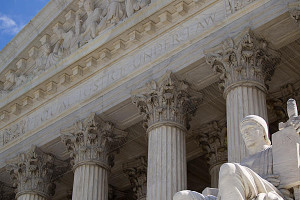Editors’ note: Although the LegiSource is currently on hiatus, we are making an exception and posting today’s article on the Title 12 Recodification Project to provide timely notice of the meetings scheduled for June 29 and 30. Regular postings for LegiSource will resume July 7.
by Thomas Morris
If you’re like me, you rely to some degree on a filing system to store and, more importantly, retrieve documents that are important to you. How well this works for you depends not only on how the system is set up but also how you actually store documents over time. Although it’s hard to find what you’re looking for in a poorly designed organizational system, few things are harder to find than a document that has been misfiled. Who would think to look for a recipe for soup in a folder labelled “soap”?
In contrast, a well-designed system includes only subjects that relate to the overall system and organizes those subjects in an intuitive way. This reduces the possibility of misfiling a document and increases the likelihood that you’ll be able to find what you’re looking for.
Similarly, although the original organizational structure for title 12 of the Colorado Revised Statutes (regarding “Professions and Occupations”) may have worked well initially, over time several problems have emerged:
- Almost one-third of the title’s 104 articles have been repealed, but the numbers for those articles cannot be reused;
- Another one-third of the articles have been squeezed between previous articles (such as 43.2, 43.3, 43.4, etc.) in an effort to add new articles in alphabetical order;
- The title is organized into a series of “General” articles, then a series of “Health Care” articles, and finally another series of “General” articles;
- Many articles contain duplicative language that could be consolidated into a general or common provisions article that could apply broadly to all professions and occupations; and
- Title 12 addresses not only laws governing professions and occupations regulated by the department of regulatory agencies but also other areas of law that are not truly a “profession or occupation”, affecting seven principal state departments, the judicial branch, local governments, and medical schools.
These shortcomings make the title unnecessarily voluminous, repetitive, and difficult to amend, understand, and administer. For example, title 12 includes an article about dead human bodies, including a part 1 governing anatomical gifts and a part 2 governing unclaimed dead human bodies. Certainly, no one makes a profession or occupation in making anatomical gifts or in claiming dead human bodies. So why are these laws codified in title 12? It probably makes more sense to put them in the laws governing medical facilities (which receive anatomical gifts) or medical schools (which receive unclaimed bodies).
To redress these problems, the General Assembly recently enacted Senate Bill 16-163. The act directs the Office of Legislative Legal Services (OLLS) to conduct a two-year study of an organizational recodification of title 12. What does an “organizational recodification” mean? To recodify means to rearrange and reorganize a system of laws. In the context of title 12, a recodification means that the laws in title 12 will be repealed and reenacted; laws that may have been “misfiled” in title 12 may be “refiled” in a more appropriate title. As expressed in the act, § 2-3-510 (3) (a), C.R.S., “organizational” means that:
Fundamentally, the recodification should be organizational and nonsubstantive, and any substantive provisions that may be included in the proposed legislation should be strictly limited to those that are necessary to promote the public purposes of an organizational recodification as specified in this section, such as:
(I) Conforming similar provisions to achieve uniformity, eliminate redundancy, and allow for the consolidation of common provisions; and
(II) Eliminating provisions that are archaic or obsolete;
During the 2016 interim, the OLLS will solicit input from state and local government agencies, representatives from professions and occupations regulated under title 12, and other interested members of the public. During the 2017 interim, the OLLS, working with the stakeholders, will start to formulate specific recodification proposals and begin writing draft legislation. By December 31, 2017, the Committee on Legal Services must decide whether to approve legislation to recodify title 12 for introduction in the 2018 regular session.
The first meetings for the study have been scheduled for June 29 at 1 p.m. and June 30 at 9 a.m., both in Room 271 of the State Capitol. These are the initial, introductory organizational meetings and the agendas, which are available on the study’s web page, are identical. We encourage all interested parties to attend one of these meetings. Hopefully, by the end of the 2018 regular session, Colorado will have better-organized laws regulating professions and occupations!




